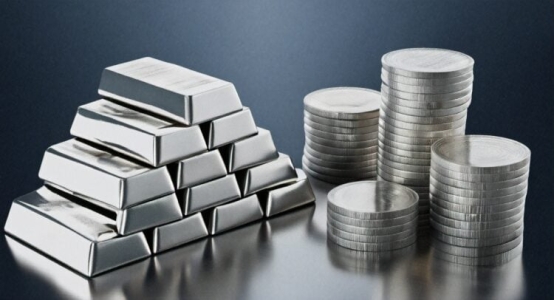Silver has always been the quiet workhorse of the precious metals family. While gold commands attention as a symbol of wealth, silver has built its reputation on functionality — a material as vital to technology as it is to tradition. Now, in an era defined by electrification, renewable energy, and digital innovation, silver’s role is expanding rapidly. The world’s pivot toward sustainability has reignited interest in this versatile metal, raising the question: is silver’s resurgence a lasting opportunity or just another cyclical surge?

Why Silver Matters Now More Than Ever
Few materials offer the combination of properties that make silver so irreplaceable. Its superior conductivity allows electricity to move with minimal resistance, making it crucial for everything from solar panels to electric vehicles. In solar manufacturing, silver paste forms the fine conductive grid that captures sunlight and converts it to power. As solar installations break records globally, this sector alone consumes hundreds of millions of ounces annually.
Electric vehicles add another layer of demand. Each EV relies on extensive wiring, sensors, and power control systems that depend on silver’s conductivity. With automakers investing billions in electrification, silver’s importance within the automotive supply chain is undeniable. Beyond these headline industries, silver’s antibacterial and reflective qualities make it valuable in healthcare, water filtration, and electronics. It is truly a metal that connects modern life — from the energy grid to the smartphone in your pocket.
How Investors Are Responding
The surge in industrial demand has reignited silver’s investment appeal. For individuals looking to diversify, there are several key avenues to participate:
- Physical Silver – Coins, bars, and rounds remain popular for investors seeking tangible security. Physical silver acts as both a hedge against inflation and a portable form of wealth. However, secure storage and insurance are necessary to protect value.
- Silver ETFs and Trusts – These provide exposure to silver prices without the need to store metal. They are cost-efficient and easy to trade, but subject to management fees.
- Mining Stocks – Silver producers often provide leveraged exposure, as profits can multiply when metal prices rise. Still, company performance depends on production costs and geopolitical factors.
- Futures Contracts and Options – These allow traders to speculate on price movements using leverage. The potential returns are high — but so are the risks.
- Pooled Storage Accounts – Ideal for investors who prefer fractional ownership of professionally vaulted silver.
Each approach has a unique balance of cost, convenience, and control. The right choice depends on whether an investor seeks long-term stability or short-term speculation.
Understanding Volatility and Timing
Silver’s price behavior is famously unpredictable. Its hybrid nature — half industrial, half monetary — means it reacts to both economic expansion and financial anxiety. During industrial booms, silver prices climb alongside manufacturing demand. During recessions or periods of inflation, investment demand often compensates. But when both industrial and investor interest fade simultaneously, corrections can be sharp.
For long-term investors, volatility is not necessarily a flaw; it’s a feature that creates entry opportunities. Watching the gold-to-silver ratio provides useful context. When the ratio is historically high, silver tends to be undervalued relative to gold. A reversion toward its long-term average can signal potential upside.
That said, silver rarely outperforms diversified equity portfolios over extended periods. Its best use lies in portfolio diversification — an inflation hedge and crisis buffer rather than a growth engine. Financial advisors typically recommend keeping precious metals exposure around 5–10% of total assets.
Major Risks and How to Reduce Them
Investors must remain realistic about silver’s challenges. High price volatility, industrial dependency, and storage costs are persistent concerns. Physical investors face liquidity constraints, while ETF holders incur annual fees. Mining equities expose investors to political instability, regulatory changes, and labor disputes. Moreover, since silver is traded in U.S. dollars, currency fluctuations can impact returns for non-U.S. investors.
To mitigate these risks, diversification is essential. Combining physical holdings with paper instruments spreads exposure. Investors should also monitor macroeconomic indicators — such as interest rates, inflation, and manufacturing activity — which often drive silver cycles. Risk management tools like stop-loss orders or dollar-cost averaging can help maintain discipline in volatile markets.
The Supply Side: Tightening Fundamentals
While demand is rising, silver supply growth remains limited. Most silver production is a byproduct of mining other metals like copper or zinc, meaning output depends on the economics of those industries rather than silver itself. As global mining faces stricter environmental standards, future supply growth could slow further. Recycling and recovery efforts help but cannot meet the projected demand surge from renewable energy and EV sectors.
This potential supply gap forms the foundation for long-term bullish expectations. If industrial consumption continues to grow faster than new mine output, silver prices could remain structurally higher than in past decades.
Final Insights: A Metal of the Future
The “silver boom” narrative is grounded in real technological change — not just speculative enthusiasm. Yet, investors must differentiate between long-term structural trends and short-term hype. Silver’s importance to electrification and clean energy is undeniable, but its price journey will still be volatile. Smart investors approach silver as a strategic satellite asset within a diversified portfolio — one that complements equities and bonds rather than competes with them.
In the end, silver’s value lies not only in its shine but in its purpose. It powers progress, connects industries, and reflects humanity’s drive toward sustainability. Whether the boom continues or stabilizes, silver’s relevance in the global economy is assured. Those who understand its cycles, respect its volatility, and invest with patience may find that this metal — long overshadowed by gold — finally has its moment to shine.
